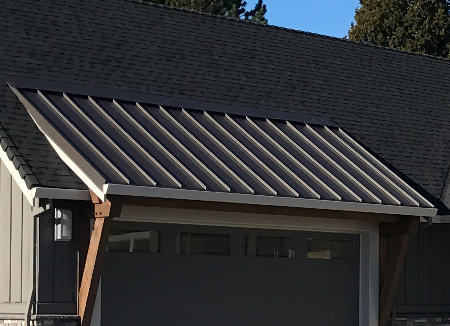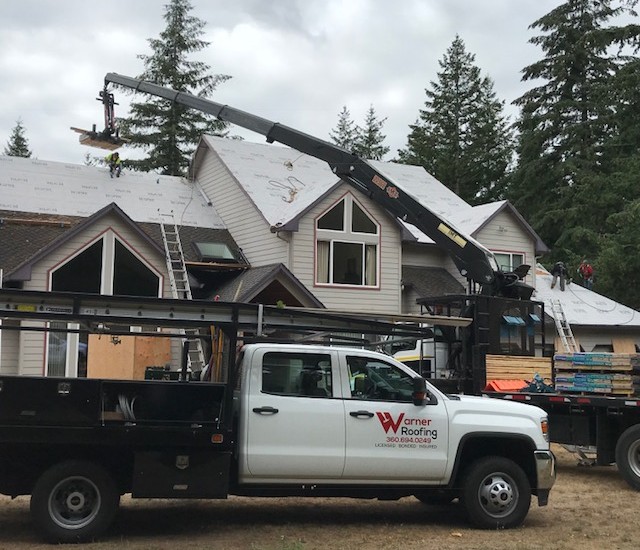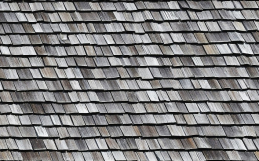Roofing has seen tremendous changes over the past several decades. While new materials and innovations continue to transform the roofing industry, some old standards are experiencing a revival. Materials like metal roofing, which was once seen primarily in agricultural or industrial settings, are now one of the most popular residential roofing types.
Others, like the timeless wood roofs or cedar shake, have never really gone out of style. Whether you’re seeking a durable option or aiming for increased curb appeal, the type of roof you choose plays an essential role in your home’s protection and aesthetics. In this blog, we will look at the different types of roofing materials and discuss their features, advantages, and how they suit different architectural styles.
Types of Residential Roofing Materials
There are many different types of roofing materials, each with its own strengths and weaknesses. Depending on your needs, budget, and the climate in which you live, some materials may work better for you than others. Below, we explore the common types of roofing materials you can choose from for your home.
Asphalt Shingles
Asphalt shingles are perhaps the most popular choice for residential roofing in North America. They are affordable, easy to install, and come in a wide range of colors and styles to fit almost any architectural design. Asphalt shingles are known for their durability and can last for up to 20 to 30 years with proper care.
They offer excellent weather protection and can handle rain, snow, and sunlight quite well. Additionally, asphalt roofing is a cost-effective option, which makes it appealing for homeowners on a budget or if you have a rental property that needs new roofing.
 Metal Roofs
Metal Roofs
Metal roofs have made a significant comeback in residential roofing. They are extremely durable and can last upwards of 50-75 years or more with proper maintenance. Metal roofs come in different styles, including standing seam metal roofing and metal shingles.
They are also fire-resistant and energy efficient, as they reflect sunlight and can help lower cooling costs in hot climates. Standing seam metal roofing is known for its sleek, modern appearance and excellent protection against leaks.
Slate Roof
Slate roofing is known for its distinctive and elegant appearance. A slate roof can last for well over a century, making it one of the most long-lasting types of roofing materials available. This natural stone material provides unmatched durability and weather resistance.
However, slate roofing can be very heavy, so you’ll want to make sure the roof structure can handle that extra weight. Warner Roofing works with composite shingles that resemble slate, so that extra weight isn’t a worry.
Wood Roofs
Wood roofs, including cedar shake, provide a classic, natural look that many homeowners love. Wood roofing materials offer a warm, rustic appearance that can enhance the curb appeal of your home. They are also relatively energy efficient, providing natural insulation. Wood roofs require regular maintenance to prevent issues such as mold or rot, and they are best suited for sloped roofs with good ventilation to help prolong their lifespan. However, they aren’t as fire-resistant as other roof shingles and materials on the list.
Clay and Concrete Tiles
Clay and concrete tiles are often associated with Mediterranean or Spanish-style homes. These tiles are durable, non-combustible, and can last for up to 50 years or more. Clay and concrete tiles are heavier than other materials, so your home’s structure needs to be able to support the added weight. They offer excellent heat resistance, making them an ideal option for hot climates.
Flat Roofing
Flat roofing is most commonly seen on commercial buildings but can also be found on modern residential homes. Flat roofs are easy to access and provide additional usable space, such as a rooftop garden or deck. However, they require proper installation and regular maintenance to prevent water pooling and leaks, as water drainage can be challenging compared to sloped roofs.
Green Roofs
Green roofs, also known as living roofs, consist of a layer of vegetation planted over a waterproof membrane. These roofs provide numerous benefits, such as improved insulation, reduced stormwater runoff, and enhanced air quality. Green roofs can also be visually appealing and contribute to energy efficiency. They require specialized care and maintenance and can be very heavy, making them a less common choice for residential homes.
Different Roofing Materials for Different Architectural Styles
The type of roof you choose should complement your home’s architecture. Different materials can highlight certain aspects of your home’s design and add to its overall aesthetic appeal. For instance, asphalt shingles are a versatile option that works well with many types of homes, from traditional to modern styles. Their availability in various colors and designs makes them easy to match with different facades.
- Metal roofs are particularly suited for modern or contemporary homes due to their sleek and streamlined look. Standing seam metal roofing, for example, gives homes a clean, polished appearance that enhances minimalist design.
- Slate roofs are perfect for historic or high-end homes that require a touch of elegance. They add character and give the home a timeless appearance.
- Wood roofs, like cedar shake, look best on cottages, cabins, or rustic-style homes that blend with natural surroundings. They provide a warm and natural feel that’s ideal for country-style architecture.
- Clay and concrete tiles are ideal for Spanish or Mediterranean-style homes, adding a classic, southwestern flair. The rounded shapes of the tiles complement stucco facades and arched windows, enhancing the home’s curb appeal.
The Importance of Proper Installation
 No matter which type of roof you choose, one crucial factor that will determine its success is proper installation. A roof may be made of the highest quality roofing material, but if it’s not installed correctly, it can lead to a host of issues down the road. Improper installation can result in leaks, poor ventilation, and even structural damage.
No matter which type of roof you choose, one crucial factor that will determine its success is proper installation. A roof may be made of the highest quality roofing material, but if it’s not installed correctly, it can lead to a host of issues down the road. Improper installation can result in leaks, poor ventilation, and even structural damage.
For instance, if flashing is installed incorrectly around chimneys or vents, it can allow water to seep through, causing damage to both the roof and the interior of the home. The consequences of shoddy workmanship or poor installation can be severe. Leaks are one of the most common issues caused by improper installation, leading to water damage, mold, and mildew growth within the home.
Incorrectly installed roofing materials can also lead to premature wear and tear, reducing the lifespan of the roof and resulting in costly repairs or replacement sooner than expected. In extreme cases, improper installation can even lead to sections of the roof collapsing.
To avoid these headaches, it’s essential to work with experienced roofing professionals who understand the nuances of different roofing systems. A skilled roofing contractor will ensure the materials are installed correctly and that all necessary precautions are taken to protect your home against the elements.
Frequently Asked Questions
What is the most popular choice for residential roofing?
Asphalt shingles are the most popular choice for residential roofing due to their affordability, durability, and ease of installation.
Is metal roofing suitable for all climates?
Yes, metal roofs are suitable for all climates. They are energy efficient and reflect sunlight in hot climates, while also providing excellent protection in areas with heavy snow.
Can flat roofing be used on residential homes?
Yes, flat roofing can be used on residential homes, especially modern-style houses. It offers additional usable space, but it requires regular maintenance to prevent drainage issues.
Are slate roofs worth the investment?
Slate roofs are more expensive than other types of roofing materials, but they offer unmatched durability and can last over a century, making them a good investment for long-term homeowners. We offer a slate composite that mimics the look of the material at a much more affordable price.
What type of roof is best for hot climates?
Clay and concrete tiles, metal roofs, and green roofs are all great choices for hot climates due to their heat resistance and energy efficiency.
How long do wood roofs last?
Wood roofs, such as cedar shake, can last up to 30 years with proper maintenance. Regular upkeep is required to prevent issues like rot and mold.
Why is proper installation important for roofing?
Proper installation is crucial for ensuring the roof’s durability and preventing issues such as leaks, poor ventilation, and structural damage. It helps extend the life of the roof and protects your home from costly repairs.
No matter what type of roof you’re considering, Warner Roofing has the expertise to guide you every step of the way. From selecting the best roofing materials to ensuring proper installation, we’re committed to delivering high-quality results that enhance the curb appeal and safety of your home. Contact Warner Roofing today for new roof installations, roof tear-offs, and roof repair services. Let us help you create a roof that is both beautiful and functional for your home!







